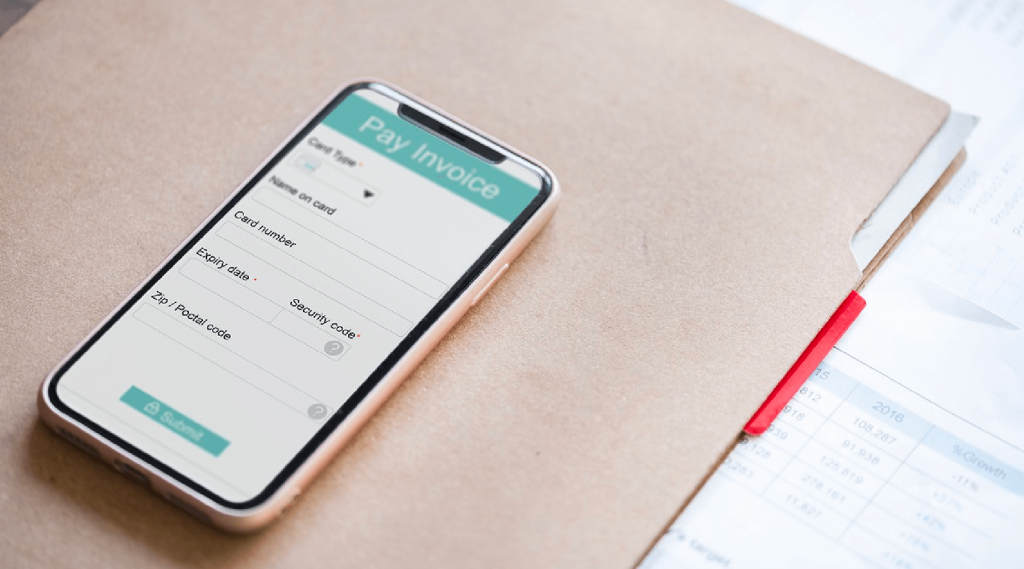The ABC’s of Small Business Bookkeeping
Small business bookkeeping involves recording and classifying financial transactions, which constitute the foundation of your accounting system. As the main objective of a business is to make a profit, accurate bookkeeping guarantees that you are using your funds efficiently. Small business bookkeeping also helps you make sound decisions to facilitate your small business growth.
Given that accurate small business bookkeeping is essential for your continued success, it is important to familiarize yourself with the basics. You need to have a firm grasp of small business bookkeeping, even if you plan to outsource this function to a bookkeeper. The financial health of your business is your responsibility. Therefore, knowing the ABCs of small business bookkeeping will empower you to check whether your bookkeeper is doing a good job of recording your financial transactions. Along with that, knowing and understanding your financial transactions will help when using a calculator to figure out your ROI.
Here are the ABC’s of small business bookkeeping to get a basic understanding, even if you are using accounting software or a bookkeeper.
You need to consider the following elements when setting up your small business bookkeeping system:
- Sales or money in
Your small business survival depends on the amount of goods or services it sells. Cash and credit sales are two main types of small business sales. You can differentiate between a cash and credit sale by taking into account when your customer pays you. For instance, if you own a retail business and a customer buys a pair of shoes in store, after your customer buys their shoes and leaves, you have made a cash sale. This is because the sale and the payment happened at the same time. A cash sale is made in this scenario, irrespective of whether the customer used cash, a debit card or a credit card to pay for their shoes.
On the other hand, a credit sale is where there is a time period between when a customer makes the sale and when you get paid. A time lapse between providing goods or services and when you receive your money is known as a credit sale. This is because the sale has been made on ‘credit’ and you expect payment at a later date. An example is where your small business provides marketing consultancy services. For instance, you work with a client for two hours to set up their Instagram account and forward them an invoice. You have made a credit sale because you provided your marketing services and anticipate that you will be paid at a specified later date.

- Expenses or money out
All businesses incur expenses in order to grow and scale. Generally, expenses are either classified as recurring or non-recurring.
Recurring expenses, like rent and insurance, are made on a consistent basis and may be paid directly from your bank account. Non-recurring expenses are normally unexpected, for example, repairs for machinery are normally paid for using your company debit or credit card.
- Inventory cycle
If you sell physical products, you need a system to track your inventory as well as costs and purchases. A point of sale (POS) system is one of the most efficient ways of monitoring your products. Inventory functions, such as creating purchase orders, verifying received orders and entering the bill into your small business bookkeeping system are necessary to ensure you pay your suppliers on time.
- Liabilities
Your business liabilities are different from your business expenses. The main difference is that you are not obliged to pay your expenses if you closed your business. However, you would still need to pay any outstanding balances that are considered liabilities, whether you are operating your business or not. An example of a liability is a bank loan that will need to be paid even if you closed your business.
Steps to set up your small business bookkeeping
The following four steps are necessary in order to set up an efficient small business bookkeeping system:
1. Set up accounts

Setting up accurate accounts helps you manage your business finances. Accounts for small business bookkeeping purposes refer to records of different types of financial transactions.
Every account is classified under five types, as follows:
- Assets
Your business assets are calculated as:
Assets = Liabilities + Equity
This means that what your business owns (assets) is balanced against all claims against your business. The asset account normally contains the cash account and fixed assets, like equipment and land.
- Liabilities
Business liabilities are the debts and obligations your business owes.
- Income or revenue
Your revenue and income is the money that your business earns, typically through sales.
- Expenditure or expenses
This account records the cash that is taken out of your business to pay for products or services.
- Equity
Equity is the value that remains after business liabilities are taken away from assets and represents your interests in the business, for example, stocks.
2. Record all financial transactions
After you have set up your financial accounts, you now need to take the second step of recording the details of how money is flowing in and out of your small business.
The majority of bookkeeping is based on a double-entry system. This means that, for every transaction you enter into your accounts, there should be an opposite and equal entry in a different account. Therefore, you will record a debit and a credit for every transaction using double-entry small business bookkeeping.
It is not compulsory to use a double-entry system, as you can use a single-entry method instead. However, single-entry small business bookkeeping is useful if you only need to record a small number of financial transactions. Although single-entry is faster than double-entry bookkeeping, it is limited in its use. This is because single-entry small business bookkeeping does not provide the whole picture of your accounts. Additionally, it is difficult to use the details from single-entry bookkeeping to produce important financial documentation, such as balance sheets.
3. Reconcile and close your books

When you have recorded your financial transactions, it is time to balance and close your books. Balancing your books means that the totals should match when you tally up your debts and credits. Most small businesses balance their books at the end of every month, quarter or year.
It is recommended that you balance your books at the end of every month in order to stay on top of your small business bookkeeping. Reconciling your books on a monthly basis makes it easier to complete your tax return accurately and on time.
4. Organize your financial statements
One of the main tasks of small business bookkeeping is to create financial reports. These reports provide you with important information about the financial health of your business.
There are many different financial reports that could benefit your small business. Below are the most common types used to provide a financial snapshot of your business:
- Balance sheet
The balance sheet provides a summary of your assets, liabilities and equity over a given period of time.
Profit and loss (P&L) statement

The P&L statement is also referred to as the income statement and provides a summary of your revenue minus your expenses over a given period of time. The P&L statement helps you to find out how much revenue you have generated from your products and services. You will also be able to identify where you are spending money in relation to your expenses. Reviewing your P&L statement will enable you to spot business trends and allow you to create better forecasts and budgets.
- Cash flow statement
The cash flow statement is similar to the P&L statement, except that it does not list any non-cash items, for example, depreciation. You will recognize where your business is making and spending money by reviewing your cash flow statement.
Cash flow statements normally contain the following three categories:
Operating activities – Lists the amount of cash that was made from the day-to-day running of your business.
Investing activities – This part of the cash flow statement shows how much cash came from the assets you bought for your business.
Financing – The financing section of the cash flow statement shows the cash that has come in or gone out of your business to finance your business activities.
Bookkeeping account set up

After you familiarize yourself with the different accounts to set up and the financial statements you need, it is time to decide how to set up your bookkeeping accounts.
You could choose to use spreadsheets, like Excel, to set up your accounts. If you are not already an expert Excel user, you will need to learn different formulas to ensure accurate bookkeeping. Using Excel may be sufficient for very simple bookkeeping tasks, but can become very complicated when the number of your financial transactions grows. Manual bookkeeping with Excel is generally not recommended due to the high likelihood of errors and the time and effort it takes to set up formulas to properly reconcile your books.
If you would prefer to use a system that is easy to navigate, consider using cloud-based software, like Xero or QuickBooks. These types of accounting and small business bookkeeping software are used by many business owners to simplify their accounting. A big advantage is that this software is cloud-based so you can access your accounts anywhere and on any device. Additionally, using cloud accounting software helps you to automate some of your small business bookkeeping tasks. For example, if you use a shift scheduling tool, like Deputy, you are able to seamlessly integrate your staffing costs into your accounting software.
You could also choose to outsource the bookkeeping function of your small business. You can find a suitable bookkeeper by asking your network for recommendations. Alternatively, you can use a professional social media platform, like LinkedIn, to find the right person. Be sure to be clued-up on the ABCs of bookkeeping before you outsource, so that you can monitor how your books are being kept.
Small business bookkeeping tips

As well as knowing the ABCs of small business bookkeeping, the tips below will help you to simplify the process and avoid common mistakes:
- Keep a record of every transaction – Every transaction must be recorded, irrespective of how small. Failure to record every purchase can result in the inability to balance your books.
- Develop a schedule – Create a calendar entry for bookkeeping tasks. Ideally, you should set aside some time on a weekly basis to make a record of all your financial transactions.
- Be strict with account classification – You will recognize that the number of accounts will grow as your business grows. Do not be tempted to misclassify your transactions for an easier life. This approach will cause you headaches later when it is time to reconcile your books.
- Keep your records safe – Accurate and readily-available records are not only recommended for better bookkeeping but they also help your business to comply with the law. You should be in a position to produce every financial record for your business in the event that you are audited by the IRS or any other government department.
- Choose the right tools – As you can tell, bookkeeping can become very complicated when your business grows. Choosing the right software can make the difference between producing useful financial statements and being confused about the financial viability of your small business
Just as selecting the right small business bookkeeping software is vital for your efficiency, so is choosing the most appropriate management workforce tool. Deputy is used by over 70,000 businesses to schedule their employees’ shifts. Deputy also seamlessly integrates with some of the most trusted tools to help you to create a complete business management solution. Contact us by clicking on the button below for a demo to find out how Deputy can benefit your small business.

We strongly recommend that you seek professional accounting advice in relation to your business finances, as this post does not constitute professional guidance.
